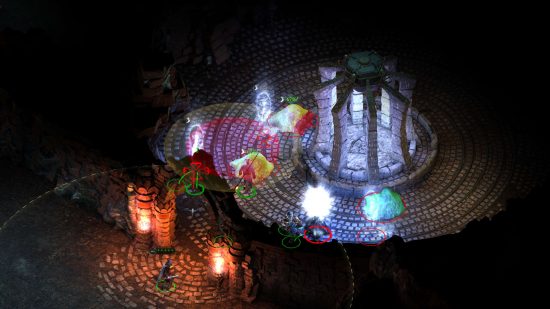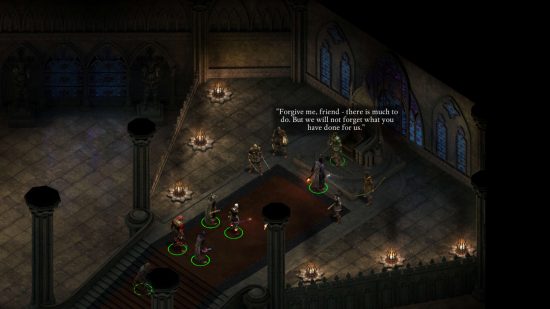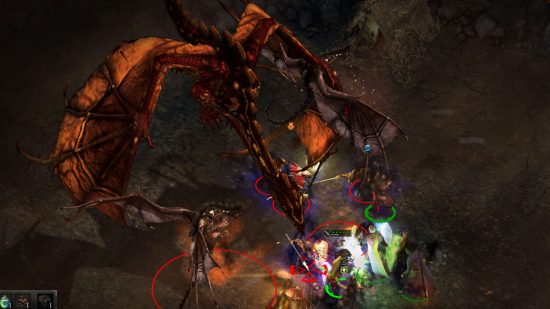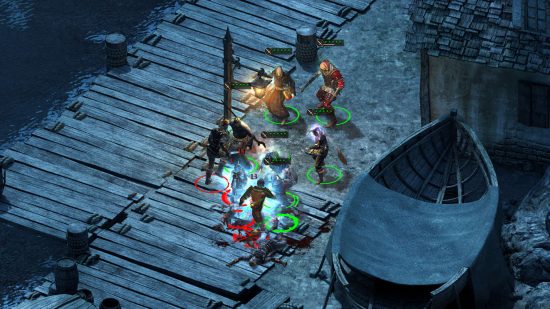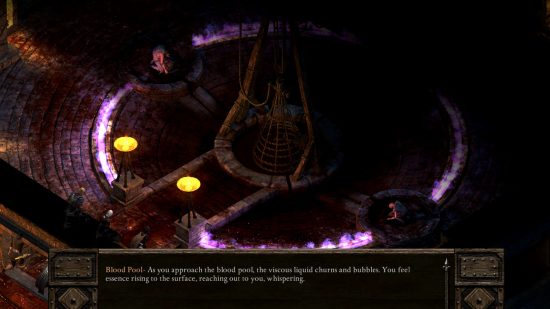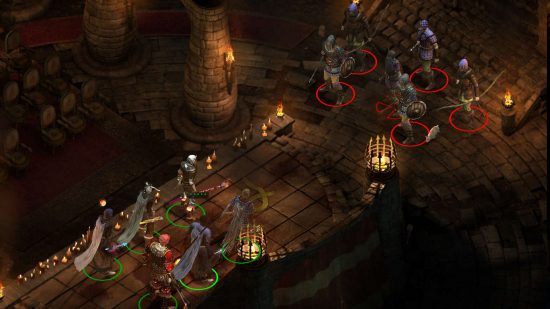I’m lucky enough to write about Warhammer 40k and DnD for a living, and with the Baldur’s Gate 3 release date looming at the start of August, good sense says I should spend my evenings delving deep into the Early Access build while bracing for launch. As I’m not a sensible man, I’m instead forty hours deep into 2015’s Pillars of Eternity.
I can’t fully explain why I started a new playthrough of an eight year old RPG, but it has captivated me utterly. It’s definitely good: our sister site PCGamesN published a glowing Pillars of Eternity review when it first released. Looking at it today, the sheet gulf between Pillars and Baldur’s Gate 3 reveals just how much has changed in the world of PC gaming since then; changes that Pillars itself helped kick start.
Pillars of Eternity is an isometric RPG with pre-rendered backgrounds, a huge fantasy world, an epic storyline involving gods and mortal, and a party of oddball characters each with their own narrative threads to pull on. It may sound like a stereotype of the genre, but it’s more accurate to call it an archetype. Pillars of Eternity was Baldur’s Gate 3 long before Baldur’s Gate 3 existed.
Not officially, of course. Obsidian Studios launched the Kickstarter for “Project Eternity” in 2012, promising a spiritual successor to the Baldur’s Gate RPG series and the era of isometric RPGs that it inspired. At the helm was a dream team of lead designers from multiple landmark CRPGs, including Planescape Torment’s Chris Avellone, Fallout’s Tim Cain, and Neverwinter Nights II’s Josh Sawyer.
I was one of over 70,000 backers who threw money at the screen to make this game happen. It was one of the first Kickstarter mega-hits, raking in almost $4 million, and still sits as the fifth most funded video game Kickstarter. So what did we get for our money?
Launching in 2015, Pillars of Eternity ditches the mechanics of Dungeons and Dragons. All the familiar DnD Classes and one or two DnD races make it in, but the DnD stats have been overhauled in a way that’s simply fantastic; there just aren’t any dump stats.
The Might stat controls damage output, whether you’re punching someone or casting a spell; Intelligence controls the Duration and Area of Effect of abilities, whether you’re a Wizard casting Dazzling Lights, or causing Carnage with the Barbarian’s wide swings. This video presentation at GDC by Game Director Josh Sawyer gives an exhaustive breakdown of the reasoning behind the changes:

The system makes most builds playable, if perhaps a little weird. You can also optimise your build around what you want to achieve in non-combat interactions without sacrificing your combat capability. That’s a distinct problem in Baldur’s Gate 3, in which building a high Charisma character to succeed at delicious conversation skill checks means you’ve got to run a DnD Paladin (urgh), Warlock (fine), or Bard 5e (no thanks, that’s my life already).
The original Baldur’s Gate games tell an amazing story within the Forgotten Realms, bringing into focus the parts of the world that enhance that tale while leaving other parts in the background. Obsidian had the luxury of building a cosmos from scratch for Pillars of Eternity. And boy did they build one.
Pillars is a thorough piece of world building. It goes to great lengths to answer one question: what would it be like if we knew that souls were real? So our story takes place in the Dyrwood within the world of Eora, where a supernatural plague is causing children to be born without souls. No-one has answers, everyone is scared, and most of them are angry.
Some see it as divine retribution for the killing of Saint Waidwen, a burning prophet who recently waged a holy war: others think that his God’s religion itself is to blame. ‘Animancers’ loot the ruins of the ancient Engwithan society, seeking relics that will advance the art of soul manipulation and perhaps find a cure – but their hastily prototyped ‘solutions’ have often been disastrous.

The central plot begins with the player character caught in a soul-shredding supernatural blizzard. This ‘Awakens’ memories of a past life trapped within their soul, and reveals them to be a Watcher, a natural soul-scryer who can see and interact with the souls of others. The search for answers, and the threat that their mind will fall apart with its new knowledge, drives the player’s quest.
The player’s adventure is tied into the fundamental laws of this fantasy universe. Yet the world manages to feel much bigger than just your adventure in it. History rests on top of history in the Dyrwood, with multiple generations of settlement, rebellion, and war. Its a metropolitan fantasy world, with visiting nations and cultures you’ll never visit making themselves felt in the story. Each culture jostles for a place in the world, and has its own memories of events both recent and distant.
Pillars of Eternity has an approach to liberal values that I think could only have been made in 2015 – by which I mean, it’s complicated. Sometimes it’s cheerful and unexamined: boreal dwarf ranger Sagani is on a multiple-year quest to find reincarnation of a tribal ancestor, leaving her husband in the traditional role of child-rearing. No questions asked.
The elf wizard Aloth shares his personality with a previous incarnation, a tribeswoman, and he’s far more disturbed by her manners than her gender. A visit to the brothel in port district Odra’s Gift reveals that the patrons are both male and female, and the professionals come from every gender and species on Eora.
At other times, the game is all too eager to explore the nastier consequences of its setting. Descriptions of infanticide and miscarriage resulting from the supernatural curse are present from very early in the story, and prevalent throughout.
The colonial history of the region is brutal, and an early plot point involves a Watcher who discovers that his soul once belonged to a war rapist, and then the son of that assault who eventually burnt down his father’s village in retribution.
It’s an unconsciously confrontational approach to potentially upsetting themes – like I say, very 2015. Nevertheless, it has me hooked. It has been a very long time since I cared this deeply about the setting and story of a digital RPG. The Witcher 3 came close, but mostly that was Geralt’s voice. Before that, we’re talking Planescape Torment.
Pillars is no slept-upon Indie darling. Its Kickstarter success made waves, proving there was huge demand for isometric RPGs at a time when the industry had largely abandoned them. That kicked off a mini renaissance for the genre that eventually gave us hits like Disco Elysium and, yes, Baldur’s Gate 3 itself.
What strikes me as most remarkable is how similar Pillars of Eternity and Baldur’s Gate 3 can be, while remaining totally different. Both are the product of passionate, experienced teams, masters in their respective fields. Both grapple with the legacy of the original Baldur’s Gate games in their narrative scope and design choices. Both strive to provide an authentically DnD experience, often in spite of the tools that DnD provides. Both are great.
Pillars of Eternity is on the PC Game Pass games list, and is currently $7.50 in the Steam Summer Sale. If you’re using a particular battered laptop, you can check with our friends at PCGameBenchmark to find out how well it will run on your system.
Source: Wargamer



